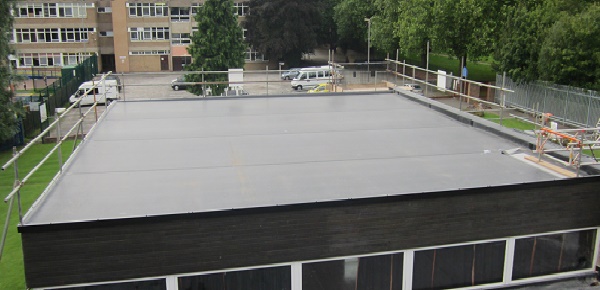Roofs have been around as long as there has been shelter for humans. With some of the first roofs being constructed from woolly mammoth skin. In this article, we will explore the different materials used over time, how they evolved and what advantages and disadvantages they had over other materials.

The first roofs can be attributed back to at least 40,000BC. The idea caught on quickly that a roof equalled protection and survival. Mankind had to learn how to construct homes from scratch with the materials they had available. Protection and survival were the most important factors when constructing a roof, however in time, roof design followed.
Much later, in around 100BC, the Romans introduced slating and tiling, which is still used today then in 735AD, thatched roofsbegan to appear as a method of roofing.
For 300 years wood shingles were a popular choice, until they were replaced by clay tiles, under the new law set by King John of England. It is around this time that the mass production of roofing materials began. Before mass production, the person who owned the house was responsible for constructing it, along with the construction of the roof.
As time progressed and mankind became more resourceful, better roofing materials became available thus resulting in much more efficient construction methods being learnt and practiced.
Roofs have come a long way since they were first constructed. After using something as basic as mammoth skin, todays materials of choice are not only stronger and more resilient, they are also much more flexible and this allows the construction of larger, more open buildings and great famous buildings we have come to know through history.
Much closer to home, the 20th century saw the manufacture of tarmac shingles which can last from 20 years to a lifetime, depending on the thickness. The thinner the shingle, the less amount of time it lasts for. Thicker shingles are generally more expensive though, the cost depending on the thickness and durability of the shingle itself. When a layer of shingles needs replacing, they are usually stripped, allowing a new layer to be installed without having to redo the whole roof.
There is an alternative method, to save time; you can install another layer directly over the worn layer. There is a major disadvantage to that though, mainly, water damage can be missed if the worn shingles are just pasted over and water damage is often the main cause for wear.
You are only prolonging the inevitable which would be a full replacement, so it is best to completely strip the affected area and replace the affected shingles. It will save you money in the long run. Having multiple layers of shingles makes the roof weaker because the nails holding them in place are located further and further away from the sheathing and the weight of the extra material could overload the capacity of the roof structure and cause catastrophic failure. In short, your roof will collapse, costing you a fortune.
For a large portion of the 20th century, Asbestos was a first choice for insulation and was used a lot in the production of roof materials. This was because it was fire resistant and could be mined naturally and was easy enough to come by, therefore keeping costs down. This however proved to be fatal for many people, as asbestos was soon to be found to be an extremely carcinogenic material. In particular if any of the fibers became exposed to open air. This would happen often if roofs became damaged over time due to natural wear and tear. Left untouched however, there were supposedly no risks. Health and legal issues were raised to the point where the governmentbanned use of asbestos materials in building and roofing in new builds after 1991. However, many asbestos roofs continue to exist, especially if you house was built between the 1950s to late 80s.
However, there isn’t really cause for concern, especially if you look after your roof properly. If the idea seems unappealing, you can have the asbestos removed by a certified remover. It is vital that you never attempt to remove the material yourself as you are putting yourself at risk of mesothelioma.
So as you can see, roofs have evolved quite a lot over time, with many successes, and also failures. Who knows what the future holds for roofs? In the meantime, if you are looking for flat roofing in Coventry, then a good place to start woud be marcus roofing. Have your roof properly maintained and looked after by a professional and it will last a long time!
